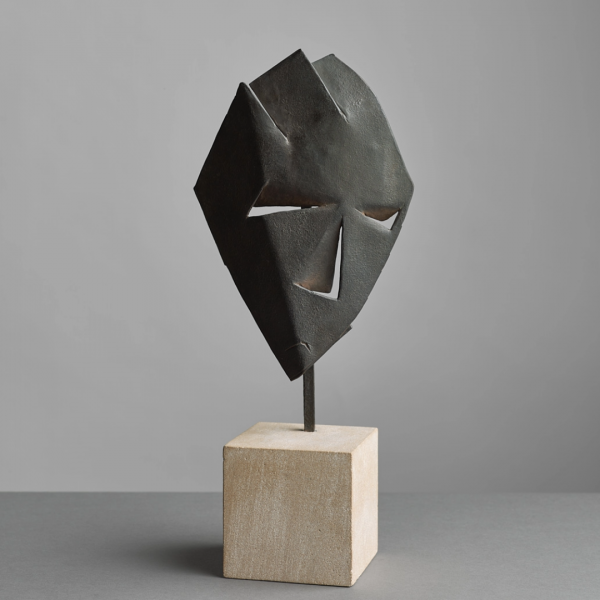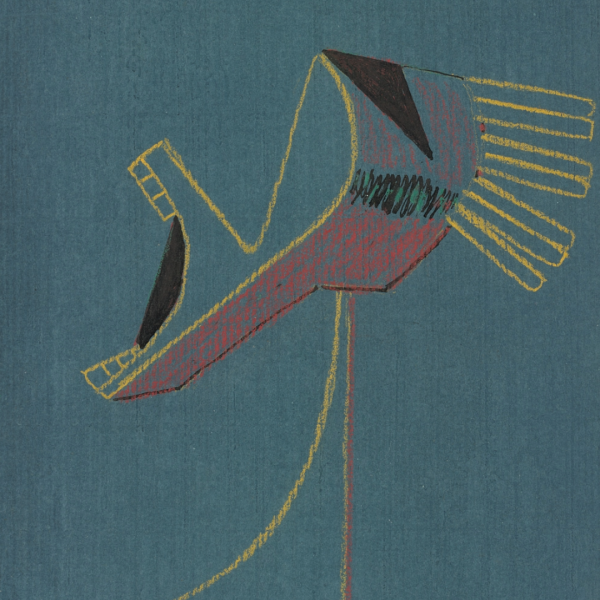GONZÁLEZ, JULIO
(Barcelona, 1876–Arcueil, France, 1942)
Born into a family of gold and silver metalworkers and iron artisans, from a young age Julio worked alongside his father and his brother Joan (who would become a painter) in a Barcelona buzzing with the advent of modernisme. In 1892 he enrolled at the art school La Llotja and soon started frequenting Els Quatre Gats, where he coincided with Ramón Casas, Isidro Nonell, Santiago Rusiñol and Picasso. In 1899 he visited Paris and in 1903–4 used Pablo Gargallo’s workshop. It was during these years that he likely became friends with Constantin Brancusi. He exhibited sporadically at the Salon d’Automne (1904, 1909, 1913) and at the Salon des Indépendants (1907, 1914). Until 1930 he practised both painting and sculpture, initially influenced by modernisme and then by noucentisme, with nudes, women in general and Catalan peasant women as his central themes. In addition to exhibiting paintings and pieces of jewellery, he made sculptures in the round from plaster, terracotta, bronze and copper. His first repoussé metal masks date from about 1910. In 1918 he entered the welding workshop La Soudure Autogène Française in Boulogne-sur-Seine as an apprentice, learning the technique that later on would enable him to assemble fragments and metal plates with enormous creative freedom. In the 1920s and 30s he regularly presented work at the Salon d’Automne, the Salon de la Société nationale des Beaux-Arts, the Salon des Indépendants and the Salon des Surindépendants. In the period 1928–31 he developed a fruitful artistic collaboration with Picasso, who asked him for assistance on how to make his iron sculptures. González taught him the technique of autogenous welding, while Picasso introduced the sculptor to the use of discarded materials and showed him how to employ perspectives and concave-convex contrasts more effectively. These joint investigations led to a series of heads and masks of women that were also influenced by Gargallo. Towards the end of that decade, González had frequent contact with the surrealists and Torres-García. By this time, he was practising sculpture to the exclusion of all other media, and some of his most decisive, abstract and essential works date from this period, such as Mujer ante el espejo [Woman in Front of a Mirror] (1936–37), which denotes a subtle surrealist influence. It was also at this time (1930–31) that he wrote the essay, only published in 1978, entitled “Picasso sculpteur et les cathédrales”. He exhibited his work frequently and to increasing critical acclaim in Paris, at the galleries France in 1930, Percier in 1934 and Cahiers d’Art in 1934 and 1935. His tendency towards abstraction did not eclipse his more classical approach, in which the metal plates curve inwardly and overlap, drawing attention to the wounds of metalwork (Torso, 1936), or a more naturalistic and figurative practice. In 1936 he participated in the Paris exhibition of the Sociedad de Artistas Ibéricos and in the Cubism and Abstract Art show at the MoMA. The Spanish Civil War inspired his Montserrat series, and one of the pieces from the project was exhibited at the Republican Pavilion in 1937 as a symbol of grief and resistance to fascism. From 1940, during the German occupation, he abandoned sculpture and focused instead on drawing, employing a vigorous and highly constructive style with echoes of Cézanne and Picasso’s classical period.


